TechRadar Verdict
Nothing's first true premium phone ticks many flagship boxes with its solid chipset, competent camera array, and good-looking display. But talking of boxes: the Phone 3 feels like one, with a design that I'll diplomatically call 'divisive'. In fact, many of Nothing's design and software choices on this phone seem intentionally outlandish, which is both a reason to buy it and avoid it.
Pros
- +
Neat software touches
- +
Useful Essential Key
- +
Handles intensive tasks well
Cons
- -
Price hike over Phone 2
- -
Divisive design
- -
Gimmick features lose novelty fast
Why you can trust TechRadar
Nothing Phone 3 two-minute review
After several years of standing at the edge of the pool and occasionally dipping its toes in, British phone maker Nothing has finally decided to jump into the cold lido that is the premium smartphone market. Perhaps it took those “no running” signs too literally, because while the Nothing Phone 3 is one of the best Android phones I've tested recently, it hasn’t made enough of a splash to truly threaten its big-name rivals.
The Nothing Phone (3), as it’s officially called – excuse the odd bracketing, but if you're new to the brand, the company is a grammatical law unto itself – marks an ascension from the mid-range Phone 1 and Phone 2. It's now priced akin to the Samsung Galaxy S25 and iPhone 17, and shall be judged accordingly.
In many ways, this is a phone that meets or even exceeds any expectations that such comparisons may evoke. Its quartet of 50MP cameras gives the big-name phones some needed pointers in hardware, especially with its far-reaching periscope lens. The battery is bigger than what Apple or Samsung use in their similarly priced mobiles, and the Phone 3's charging speed likewise outstrips the competition (as long as you don't treat mid-range Android phones from non-Samsung companies as 'the competition', because you can spend less and get more from certain lesser-known devices).
I also like some of the software touches Nothing has brought to its fork of Android. The icons of apps you download will automatically be converted into Nothing's house style, which, on my sample, worked more often than it didn't and maintained a consistency to the Phone 3's design that's rare among smartphones these days.
What I'm about to write next will upset Nothing fans, but it's something that struck me repeatedly through weeks of testing the Phone 3: it's the most novel and ‘Nothing’ touches to the phone's software that might put people off.
Take, for example, the design. Nothing likes a unique, blocky design for its phones, but ‘unique’ isn't the same as ‘good’. The Phone 3 is also a fair bit heavier than the average handset and feels ungainly to hold.
The extra side button that Nothing has added to the edge of the mobile is useful in certain situations, as it lets you take a screenshot with one tap. However, it's poorly placed – I kept mistaking it for the power button – and doesn't do as much as I would've liked. I was longing for it to double as a camera app shutter button, like on the Sony Xperia 1 VII, but no cigar.
Sign up for breaking news, reviews, opinion, top tech deals, and more.
As I've already alluded to, I can also see many people finding the software as divisive as the phone’s design, although with Nothing OS, you get out as much as you put in (i.e, if you don’t like its look, you can change a lot about it), which can't be said for every Android fork.
Going into this review, with knowledge of the price in mind, I imagined that the Phone 3 would be a Samsung Galaxy S25 and iPhone 17 rival that would pale in comparison to two of the most popular devices out there. And having used the handset for four weeks, I don’t imagine it’ll challenge those heavyweights in terms of sales.
But at the same time, I do understand the appeal of the Nothing Phone 3. It’s slick, but unafraid of its rough edges; not attempting to be the ‘everyone phone’ but trying to do something different. And you've got to respect that.
Nothing Phone 3 review: price and availability

- Released in July 2025
- 12GB / 256GB: $799 / £799 / AU$1,509
- 16GB / 512GB: $899 / £899 / AU$1,689
The Nothing Phone 3 was released in July 2025 in two variations. You can pick up the Phone 3 with 12GB RAM and 256GB storage, and that’ll cost you $799 / £799 / AU$1,509, or there’s a model with 16GB RAM and 512GB storage, and that sells for $899 / £899 / AU$1,689.
That’s a fairly premium price, and a marked step up from the $599 / £579 / AU$1,049 asking price of the Nothing Phone 2, but the brand is pushing this as its first "true flagship", and so the bump makes sense.
For context, the 256GB model of the iPhone 17 costs $799 / £799 / AU$1,399, and the Samsung Galaxy S25’s lowest-storage variant starts at the same price everywhere except Australia (where it isn’t on sale). Admittedly, for the latter, that’s a 128GB model, but you get the picture – this is the ‘premium’ price to aim for.
If that price increase is too much for you to stomach, you should consider all of the Phone 3's budget siblings, which are already out: there's the Phone 3a, Phone 3a Pro, and Phone 3a Lite.
Nothing Phone 3 review: specs
| Header Cell - Column 0 | Header Cell - Column 1 |
|---|---|
Dimensions: | 160.6 x 75.6 x 9mm |
Weight: | 218g |
Screen: | 6.67-inch FHD (1260 x 2800) 120Hz AMOLED |
Chipset: | Snapdragon 8s Gen 4 |
RAM: | 12/16GB |
Storage: | 256/512GB |
OS: | Android 15, Nothing OS 4 |
Primary camera: | 50MP, f/1.7 |
Ultra-wide camera: | 50MP f/2.2 114-degree |
Periscope camera: | 50MP, f/2.7, 3x zoom |
Front camera: | 50MP, f/2.2 |
Audio: | Stereo speakers |
Battery: | 5,150mAh |
Charging: | 65W wired, 15W wireless, 7.5W reverse |
Colors: | White, black |
Nothing Phone 3 review: design
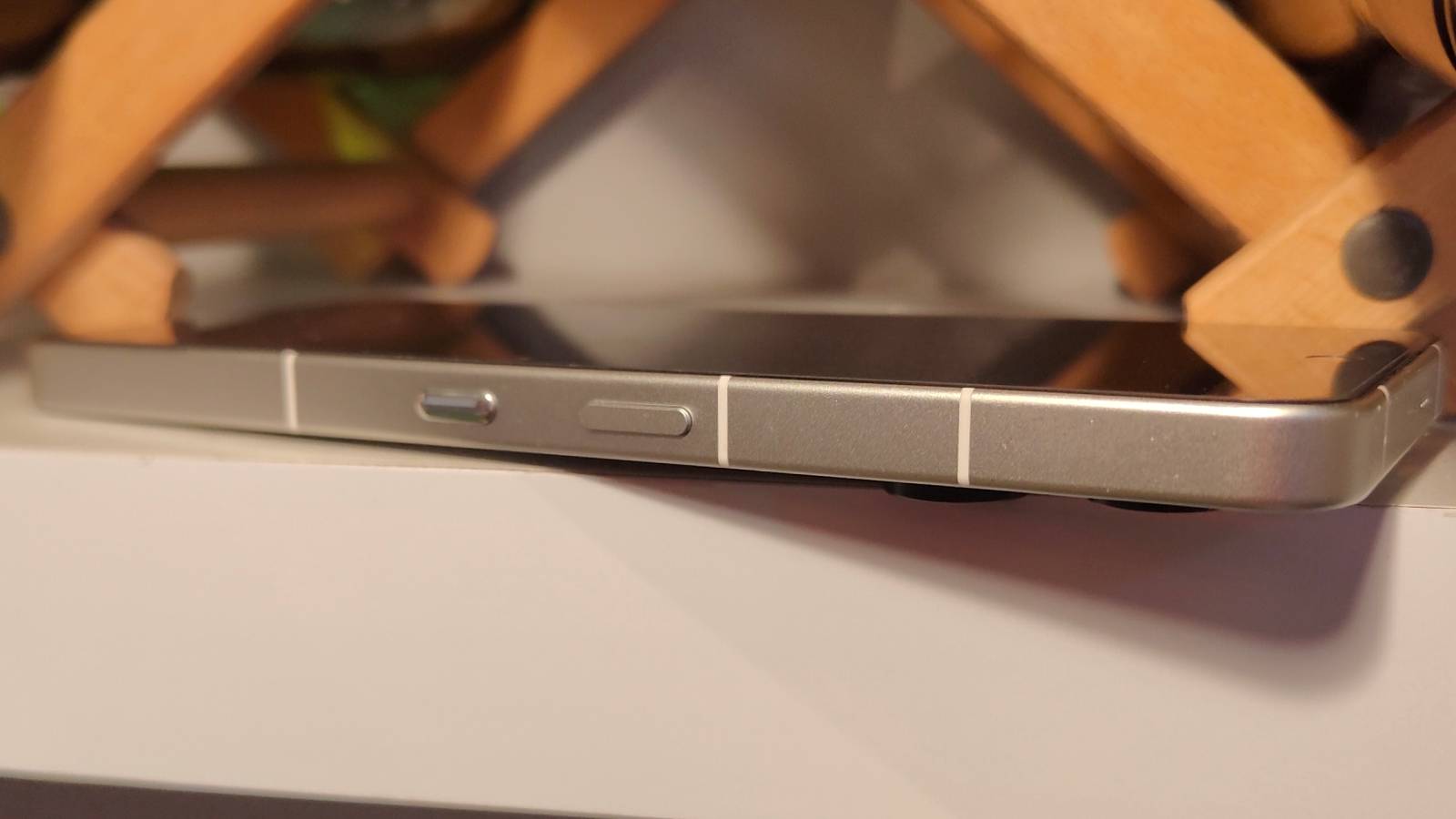
- Chunky (9mm) and heavy (218g)
- Unique twists: Glyph Matrix and Essential Key
- Blocky design
It’s been a while since I’ve used a phone that felt quite as chunky as the Nothing Phone 3. Partly, this is down to the 218g heft, putting it in a weight class above many of its premium rivals (it matches the Samsung Galaxy S25 Ultra, despite being smaller in most regards), but partly it’s the sheer blocky design of the thing.
I’m no thin-phone evangelist, but at 9mm thick, the Phone 3 is at the other end of the spectrum from the likes of the iPhone Air. It’s 160.6mm tall and 75.6mm wide, so it’s big, but it’s not Ultra or Pro Max big. But in some ineffable way, it still feels chunkier than its bigger rivals. This is clearly a phone that’s been designed meticulously, yet in a lot of ways it feels poorly thought-out.
Like its predecessors, the Nothing Phone 3 has a robot-like, mechanical-looking back, which is ostensibly see-through so you can see some screws, but not any of the real internals. The two horizontal camera lenses stick out quite far, though the higher, periscope one doesn’t; the orderly part of me hated how slightly offset this camera was. I see the whole aesthetic of the Phone 3 being quite divisive, but if you know enough about the brand to be reading this review, you’ve already decided whether you like it or not.
A new feature for the Phone 3 is the Glyph Matrix, which is an upgrade on the Glyph interface that past Nothing phones had (which were basically just light strips). The Matrix lets you display information like a stopwatch or the battery level, and there are a few games too, like Spin the Bottle and Rock, Paper, Scissors. You can scroll through the options or select them by pressing or holding the white circle midway down the body below it. Many of the Matrix functions that Nothing touts on its website, like photo previews or a torch mode, were not readily available on the phone I tested (at least via the Glyph menu, or anywhere else I checked).
So, the Glyph Matrix is an interesting feature with a few neat use cases, but there weren’t enough useful features to make it a core part of my user experience, and due to the nature of pressing the touch button, I found it easier just to flip over my phone to see the time or battery percentage.
Another feature worth flagging is the Essential Key button, which Nothing has spitefully put exactly where a power button would be on any other handset. Due to this placement, I was constantly accidentally pressing it when I wanted the phone to power up or down; hopefully, experience would eventually teach me not to do this, but it was endlessly frustrating.
The button’s actual function is fine: press it for a screenshot or hold it for a video, both of which you can caption with a written or voice memo, before they’re sent over to the Essential Space. More on that later.
Above the Essential Key is the power button, with the two positioned close enough to each other that, at first glance, you could think they were both part of the volume rocker. The latter is on the left edge of the phone, positioned high enough that I couldn’t reach volume up with my fingers, but could get to volume down.
Due to it being 2025, there’s no 3.5mm headphone jack, so the USB-C port on the bottom edge serves instead. The other important thing to note is the phone's IP68 protection, meaning it’s sealed up from dust and water resistant up to depths of 1.5 meters for up to half an hour.
- Design score: 3.5 / 5
Nothing Phone 3 review: display

- 6.67 inches, 2800 x 1260 resolution
- 120Hz refresh rate, 4500 nits max brightness
- Protected with Gorilla Glass 7i
Nothing’s apparently still not decided on the perfect screen size. After bumping up the inch count from Phone 1 to 2, it’s now dropped it ever so slightly on the 3; you’re now looking at a 6.67-inch panel, though one with a higher pixel count. That’s 1260 x 2800, for an FHD display.
The screen supports a billion colors with a 10-bit color depth, and it’s noticeable when you’re watching supported content on streaming services or online.
Some more specs: like many premium phones, the refresh rate is 120Hz, with a lower touch sampling rate than previous models at 1,000Hz, but that’s not a spec most people notice. The peak brightness is a glorious 4500 nits, and if the sun had come out once during my testing period, I’m sure I would’ve reaped the benefits of this particular spec.
The screen’s made from Corning Gorilla Glass 7I, which is designed to offer mid-range and budget phones added toughness. Bearing in mind the aforementioned IP68 rating, the handset seems very hardy.
- Display score: 4 / 5
Nothing Phone 3 review: software

- Android 15 with Nothing OS 4 atop
- Five guaranteed updates; one already here
- Unique look and many bespoke features
When the Nothing Phone 3 launched, it ran Android 15, but by the time I tested it, the rollout to Android 16 had commenced. That's the first of the five major software updates promised to the phone, taking it to Android 20 if Google keeps its numbering system consistent.
Of course, you've seen pictures of the phone, so you know it doesn't run stock Android. Layered atop Google’s software is the company's fork: Nothing OS 4. This is quite a dramatic change versus Android proper, bringing a new look and extra features.
Design-wise, there's obviously the retro-inspired blocky look, which isn't mandatory but which I opted for. I was impressed by how the system converted app icons for all my downloads into the house style, which kept a consistency across the board that I haven't seen before in forks like this. Admittedly, it stumbled a few times – the NYT Puzzles app lost basically its entire logo, and several of Nothing’s own apps have near-identical logos to one another – but it shows admirable commitment to a look.
There are also a few novel features that are unique to Nothing OS, or are at least rare among other brands. Essential Space is a repository of your screenshots, notes, and memos, with organization tools to create collections. The Recorder app has extra features to focus on voices or environmental sounds, and the Essential Key has a shortcut to quickly begin recording. And, of course, there’s the Glyph Matrix and everything that comes with it.
Nothing OS has some AI tools, like integration with ChatGPT and a wallpaper generation tool, but thankfully, these are optional and turned off by default.
There’s some degree of customization in Nothing OS, as you can change the color scheme, add widgets, and create shortcuts, but you’re not getting as much versatility as in most other Android forks. You can change the icon shapes between Nothing’s versions and the standard Android model, and there’s also a storefront to buy alternatives, although, for the most part, these cost money.
- Software score: 4 / 5
Nothing Phone 3 review: cameras
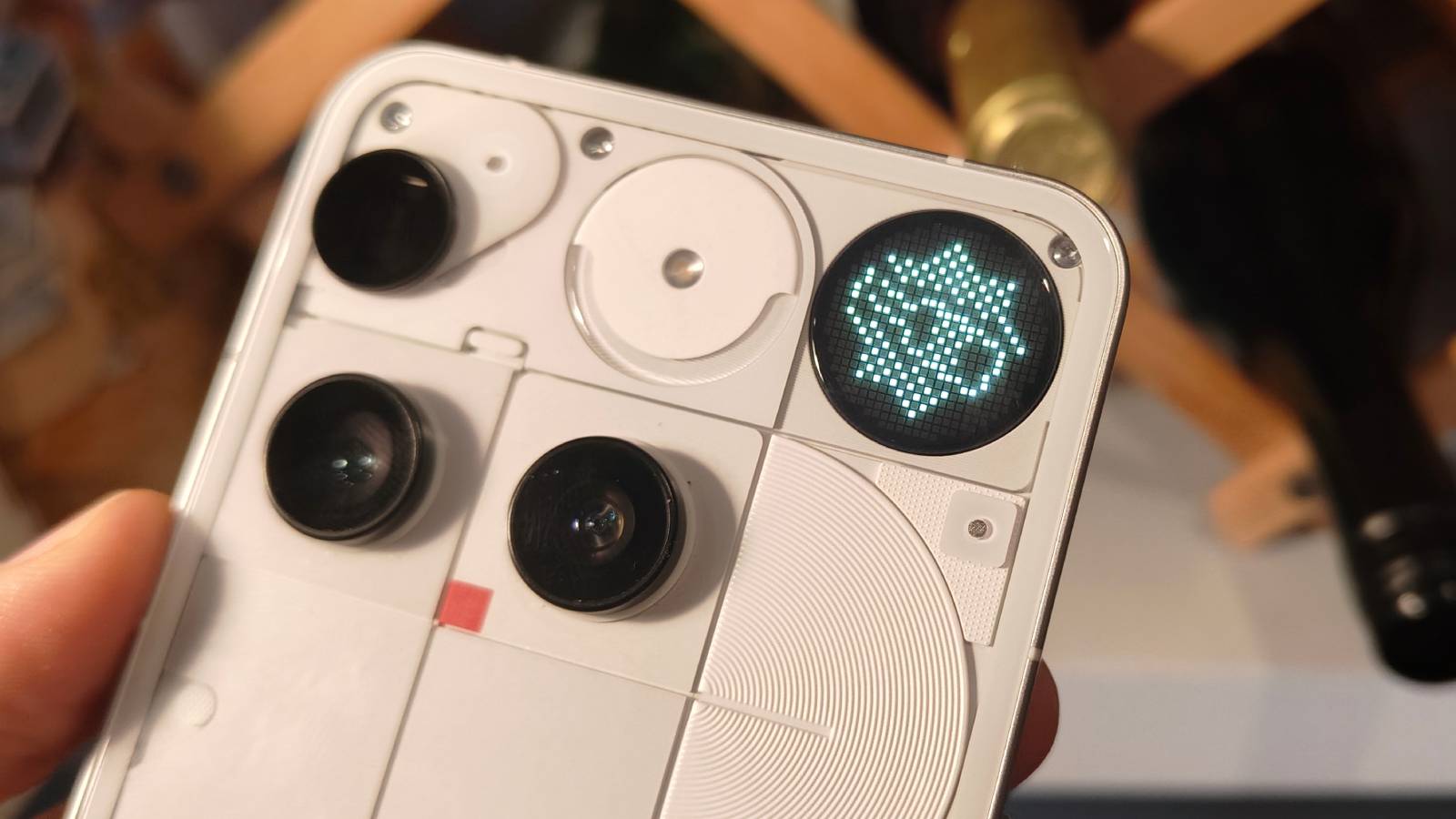
- 50MP main, 50MP ultra-wide and 50MP periscope lenses
- 50MP front-facing
- Testing is a work in progress; more samples to come
Nothing has decked the Phone 3 out with a camera array that's easy to remember: 50MP, 50MP, and 50MP. One of those is the main snapper, another has an ultra-wide lens with a 114-degree field of view, and the other has a periscope lens for 3x optical zoom.
I'm particularly glad to see the periscope camera, as lenses like this add a certain 'oomph' to a camera array. Not only is it useful for long-range shots, but it also improves the natural bokeh of Portrait photos and the close-up detail of Macro mode.
The selfie camera is – you guessed it – another 50MP snapper, f/2.2. That marks a megapixel increase over the Phone 2, although both use pixel-binning. I found selfies a little washed-out, and in Portrait mode, the artificial bokeh kept fuzzing out parts of my hair.
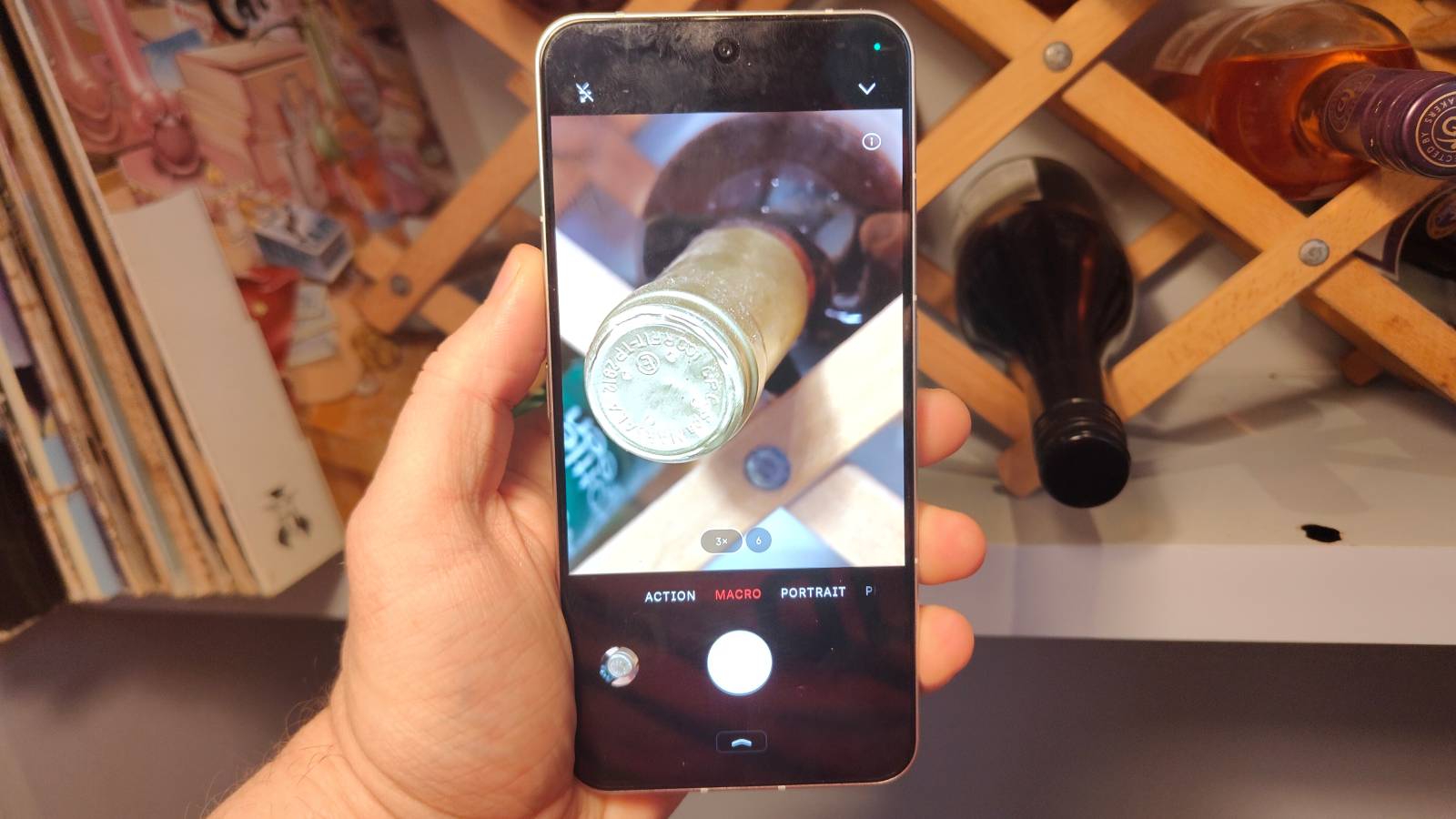
My initial impressions of the Nothing Phone 3's camera are rather positive. Its trio of cameras gives you versatility in your shooting, and the Night Mode detail was great. Autofocus was quick, and some of the extra tweaks, like modifiable bokeh, added nice touches.
Nothing's focus seems to be on fine-tuning the standard camera modes rather than adding brand-new ones, though, which seems at odds with its mode of operations in other areas of the device. But I don't mind if I have access to a periscope camera.
You can see some initial camera samples from my time with the Nothing Phone 3 below, but I'm still playing around with it. In the coming days, I'll add more camera samples as well as some fleshed-out thoughts on the phone's photographic performance. I just need to get around to using the three cameras that aren't the zoom one...
- Camera score: 4 / 5
Nothing Phone 3 camera samples






Nothing Phone 3 review: performance and audio

- Top-end Snapdragon 8s Gen 4 chipset
- 12GB or 16GB RAM and 256GB or 512GB Storage
- Stereo speakers or Bluetooth 6.0
Nothing hasn’t given the Phone 3 the very best chipset available, but one so close that you’d only know the difference by looking at its specs sheet. This is the Snapdragon 8s Gen 4 from Qualcomm, with that little ‘s’ denoting that this is a step behind the top option (which was the Snapdragon 8 Elite at the time of release, though the Snapdragon Elite Gen 5 has since debuted in newer Android phones like the OnePlus 15).
At the top end of chipsets, though, the performance differences are so minuscule that this really doesn’t matter. When I put the Phone 3 through the Geekbench 6 benchmark tests, the average multi-core score was 6847, and as of the 2025 generation of flagships, any score around 6,500 is the realm of the giants.
I tested the phone on a number of popular mobile titles, and I could always crank the game’s graphics to the max and still enjoy a cracking time. At certain times, including during benchmarking and in certain games, I did notice the phone heat up a fair amount, so be warned if you’re planning on gaming all day.
Depending on which phone you opt for, you’ll get 12GB or 16GB RAM, and I tested a model with the latter. For most people, 12GB is enough, though power users or people buying phones for specific high-intensity use cases might prefer 16GB. The same goes for the storage capacity, which is 256GB or 512GB – I know the former would be enough for me, but if you’re using the handset for work or photography, maybe you’ll want to stretch.
Audio-wise, Nothing has never released a phone with a headphone jack to my knowledge. Instead, you can use a USB-C adaptor, connect headphones through Bluetooth 6.0 or, if you’re home alone and not bothering anyone by using them, the stereo loudspeakers which sound just the same as on every other smartphone.
- Performance score: 4.5 / 5
Nothing Phone 3 review: battery life
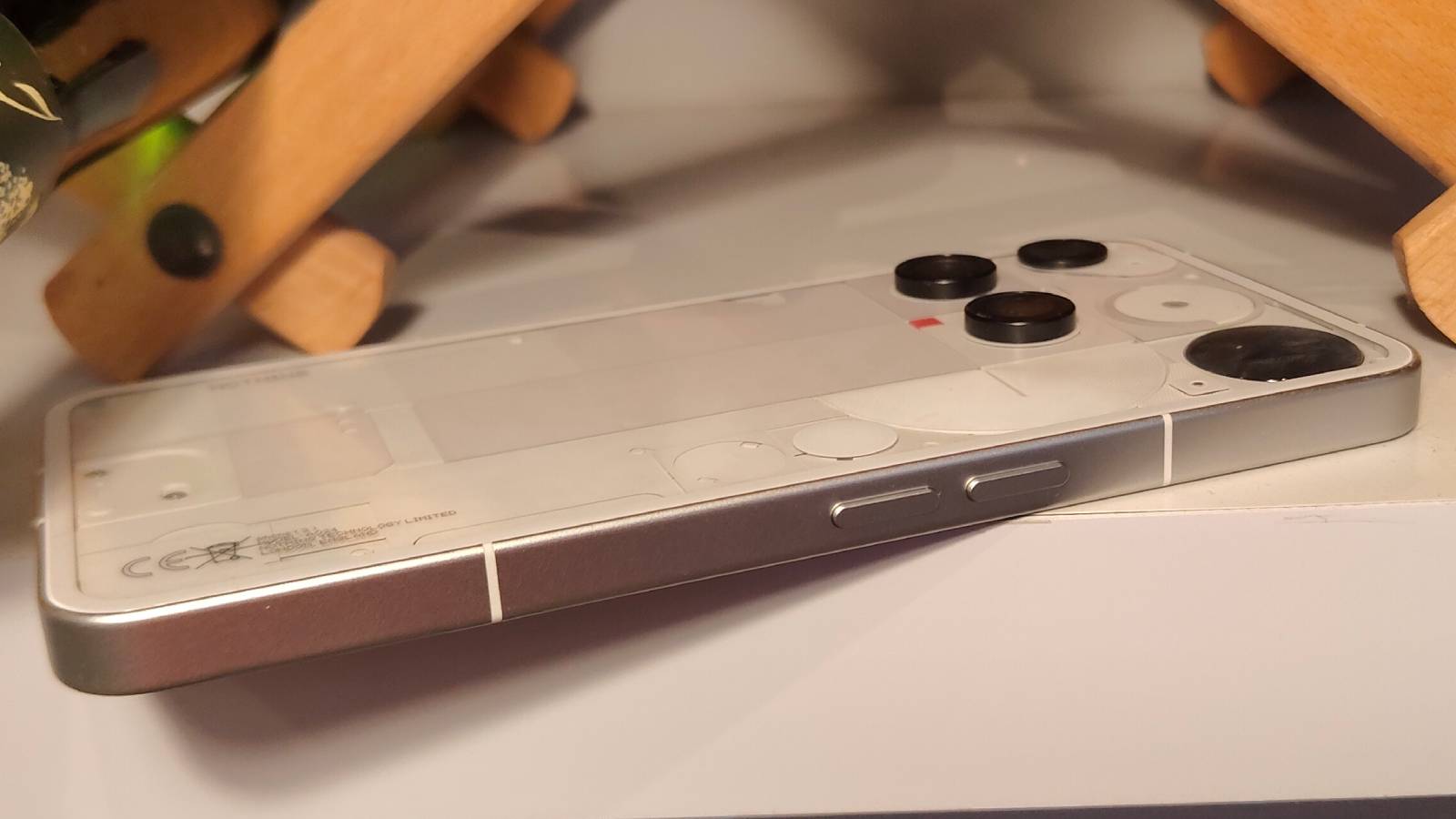
- 5,150mAh battery
- 65W wired charging
- 15W wireless powering, 7.5W reverse
The Nothing Phone 3 has a 5,150mAh battery – I’m told the Indian model has an extra 350mAh on top of that, but the rest of us get slightly less – which is slightly smaller than many of its contemporary flagships but does beat Samsung and Apple’s price-for-price alternatives.
That’s a solid battery capacity, and it facilitates full-day phone use; I don’t imagine many people will need to charge the Phone 3 mid-way through the working day.
I wouldn’t rely on the phone for a second day of use, though, with the big screen, powerful processor, and Glyph lights all demanding juice.
You’ve got the full hat-trick of charging options here. There’s 65W wired, 15W wireless, and 7.5W reverse wireless (that’s when you use your phone as a wireless charging mat for other devices). None of those speeds is the best in the biz, but – in what’s becoming a refrain for this section – they trump the respective charging speeds of the Galaxy 25 and iPhone 17.
- Battery score: 3.5 / 5
Nothing Phone 3 review: value
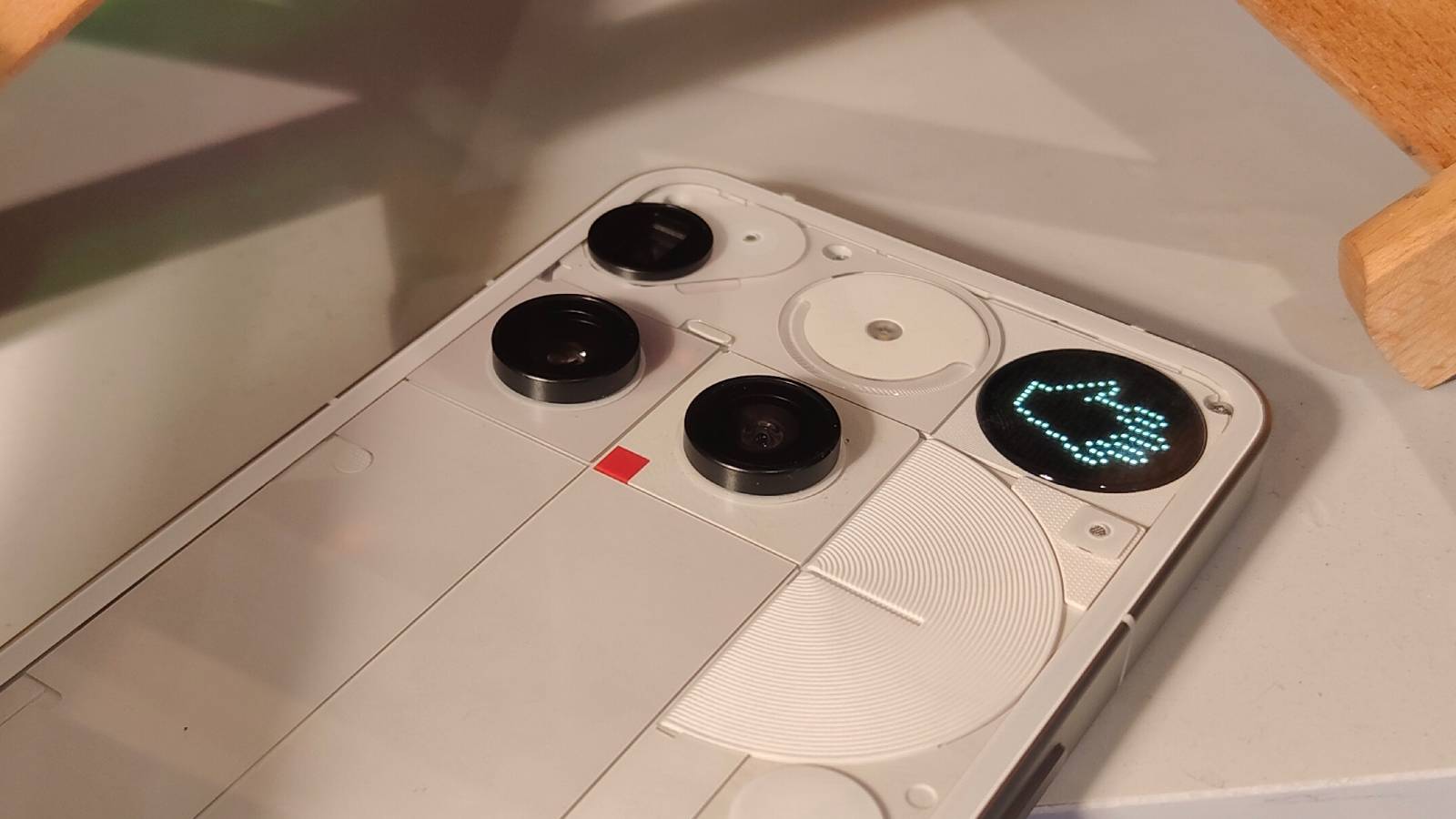
The problem with Nothing’s jump into the big leagues is that the brand’s existing fans, who know the company for mid-range mobiles, might feel a little left in the lurch.
Specifically, fans who are used to the usual Nothing value proposition might not feel that the increased price demanded by the Phone 3 is matched by its spec improvements. Case in point, you can get faster charging, a more premium design, and a bigger battery on much cheaper Android phones.
In short, you’re getting what you pay for, but that’s not the Nothing way – you usually get a little more.
- Value score: 3.5 / 5
Should you buy the Nothing Phone 3?
Attributes | Notes | Rating |
|---|---|---|
Value | Fans of the brand will be disappointed, but you're getting what you pay for. | 3.5 / 5 |
Design | It'll be divisive in the same way that past Nothing phones have been, but there are some unique touches. | 3.5 / 5 |
Display | It's a good-looking panel that's well-protected and very bright. | 4 / 5 |
Software | Whether you love or hate the look, you've got to admit Nothing has created the most consistent piece of phone software since stock Android. | 4 / 5 |
Camera | Solid hardware with a focus on refining the basics of the smartphone camera experience. | 4 / 5 |
Performance | A powerful chipset is accompanied by lots of RAM and storage. | 4 / 5 |
Battery | It's a decently-sized battery, with a fine charging speed, but there's nothing to write home about. | 3.5 / 5 |
Buy it if...
You like the Nothing aesthetic
If the design of the Phone 3 and its software speaks to you, then you should pick it up right away. Outside of other Nothing phones, no other handsets compare, visually speaking.
You need lots of processing power
The combination of the Qualcomm chipset and loads of RAM makes the Phone 3 a surprisingly capable gaming phone.
You take frequent screenshots
If you're always snapping your phone screen and sharing it with people, the Essential Key is going to prove incredibly handy.
Don't buy it if...
You want a slender smartphone
The Nothing Phone 3 is not a light phone. You really feel it when it's in your hand.
You don't want to spend too much
As the most expensive phone from the brand, this isn't the Nothing phone for people who don't want to spend too much.
Nothing Phone 3 review: Also consider
I keep comparing the Nothing Phone 3 to two particular rivals, so let's take a proper look at them as well as the Phone 3's predecessor.
Nothing Phone 2
The Phone 2 has some scaled-back specs versus the Phone 3, and it misses a few of its unique features. But it's cheaper.
Read our full Nothing Phone 2 review
Samsung Galaxy S25
This handset starts for the same price, but that gets you less storage. Samsung's premium mobile may be a bit boring, but it's powerful and has decent cameras.
Read our full Samsung Galaxy S25 review
iPhone 17
Another same-priced phone, this is the option for people who want to use iOS. It's a powerful and long-lasting handset, but with no zoom camera.
Read our full iPhone 17 review
| Header Cell - Column 0 | Nothing Phone 3 | Nothing Phone 2 | Samsung Galaxy S25 | iPhone 17 |
|---|---|---|---|---|
Starting price (at launch): | $799 / £799 / AU$1,509 | $599 / £579 / AU$1,049 | $799 / £799 / AU$1,399 | $799 / £799 / AU$1,399 |
Dimensions: | 160.6 x 75.6 x 9mm | 161.2 x 76.4 x 8.6mm | 146.9 x 70.5 x 7.2mm | 149.6 x 71.5 x 8 mm |
Weight: | 218g | 201.2 | 162g | 177g |
OS (at launch): | Nothing OS 4, Android 15 | Nothing OS 2, Android 13 | OneUI 7, Android 15 | iOS 26 |
Screen Size: | 6.67-inch | 6.7-inch | 6.2-inch | 6.3-inch |
Resolution: | 2800 x 1260 | 2412 x 1080 | 2340 x 1080 | 2622 x 1206 |
CPU: | Qualcomm Snapdragon 8s Gen 4 | Qualcomm Snapdragon 8 Plus Gen 1 | Qualcomm Snapdragon 8 Elite for Galaxy | A19 Bionic |
RAM: | 12GB / 16GB | 8GB / 12GB | 12GB | Unconfirmed |
Storage (from): | 256GB / 512GB | 128GB / 256GB / 512GB | 128GB / 256GB / 512GB | 256GB / 512GB |
Battery: | 5,150mAh | 4,700mAh | 4,000mAh | Unconfirmed |
Rear Cameras: | 50MP main, 50MP ultra-wide, 50MP periscope | 50MP main, 50MP ultrawide | 50MP main, 12MP ultra-wide, 10MP telephoto | 48MP main, 48MP ultra-wide |
Front camera: | 50MP | 32MP | 12MP | 18MP |
How I tested the Nothing Phone 3

- Review test period = 3 weeks
- Testing included = Everyday usage, including web browsing, social media, photography, video calling, gaming, streaming video, music playback
- Tools used = Geekbench 6, Geekbench ML, GFXBench, native Android stats
I used the Nothing Phone 3 for four weeks before writing this review, and continued additional testing during the writing process.
During said process, I used the Nothing Phone 3 as my main smartphone. This meant it was my tool for taking photos, scrolling social media, gaming, and working. Before and after this testing, I also conducted benchmarks, as well as standardized battery and charging tests.
I've been testing smartphones for TechRadar for nearly seven years now, so I have copious amounts of experience in experimenting with gadgets and assessing whether they're right for the general consumer.
First reviewed November 2025

Tom Bedford joined TechRadar in early 2019 as a staff writer, and left the team as deputy phones editor in late 2022 to work for entertainment site (and TR sister-site) What To Watch. He continues to contribute on a freelance basis for several sections including phones, audio and fitness.
You must confirm your public display name before commenting
Please logout and then login again, you will then be prompted to enter your display name.
